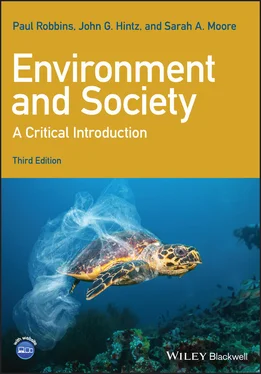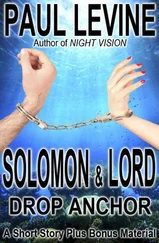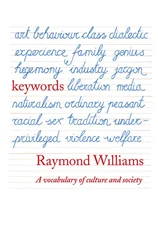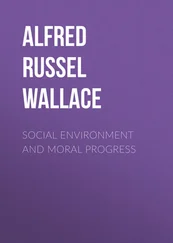What all of these cases appear to have in common is the presence of some form of institution, understood here as systems of recognized constraints on individual behavior, including formal laws, but also unofficial rules or even strong social norms that guide people’s expectations of one another’s behaviors, leading to orderly and constrained use of natural resources. Such institutions, even in their most informal manifestations, can be quickly recognized all around us. People typically queue at the box office of a movie theater rather than shove one another in a pack at the ticket window, for example. For more complex problems, sustaining a fishery, for example, the rules may be quite complex, and the mechanisms of self-governance and enforcement may be deeply rooted in traditional social systems. Nevertheless, the root principle applies; collective good and environmentally sustainable outcomes were achieved through cooperation.
Common PropertyA good or resource (e.g. bandwidth, pasture, oceans) whose characteristics make it difficult to fully enclose and partition, making it possible for non-owners to enjoy resource benefits and owners to sustain costs from the actions of others, typically necessitating some form of creative institutional management
InstitutionsRules and norms governing collective action, especially referring to rules governing common property environmental resources, like rivers, oceans, or the atmosphere
Observers of these successfully cooperative systems needed to assemble new stories, metaphors, and theories, however, to better explain what they saw. All of these revisions of “Tragedy” thinking shared one thing: a need to explain how rules and norms were able to constrain behavior and achieve cooperative outcomes.
Chief among these reconsiderations is an effort to try to define the difference between these observed systems and the property imagined in the “Tragedy of the Commons.” Acknowledging that the total absence of rules would lead to tragic outcomes, it remains necessary to also acknowledge the existence of forms of property that function through customs, rules, and/or regulations, but not in the form of exclusive private ownership rights. “ Common property” is a descriptor that includes all of these diverse forms. Different from wholly unowned resources (Latin: res nullius ), common property (Latin: res communes ) includes some form of group ownership, so that it is neither open to everyone in the world nor necessarily held exclusively by an individual (Ciriacy-Wantrup and Bishop 1975). Such a group or community of owners may take many forms, of course, to include people who know one another face-to-face in a village fishery or those more far-flung across a city, who together hold cooperative rights to urban garden plots.
But even where a right can be held by a community, this does not explain how and why members of that group might be able to achieve mutual understandings, agreements, and most importantly constraints. Rather, there must be an underlying logic that allows people to overcome, through collective action, the worst environmental case outcomes of the “Tragedy of the Commons.” Returning to the game-theoretical logic of the Prisoner’s Dilemma, a generation of “neo-institutionalist” scholars, led by Nobel Prize-winning political scientist Elinor Ostrom, began to critically analyze the assumptions of game theory. Specifically, they asked: What if our two hypothetical prisoners had been allowed to speak with one another prior to their interrogation and “get their stories straight?” Would that have changed the outcome? Logic holds that it might. Subsequent economic experiments – in which people played complex cooperation games for money incentives – bore this out as well. When the players of a game can collude together or negotiate, they are far more likely to cooperate (Ostrom 1990). Certain conditions seem to make communal management of natural resources quite possible, and indeed likely. In this way, the “neo-institutionalists” (adherents to a school of economics that stresses rules and social organization) do not deny the logical incentives that underpin Hardin’s tragedy, but do point to conditions where commons are not “free” but instead governed by rules that encourage cooperation.
Crafting Sustainable Environmental Institutions
To understand how “the commons” actually works, institutional thinkers have stressed certain rules or principles that tend to lead to sustainable outcomes. In any real-world commons, the central challenge of managing the resource sustainably focuses on a number of discrete grounded problems, each of which poses difficult questions. Consider, for example, the problems of managing a fishery. Here is a resource that is largely invisible, highly mobile, depletable (if overfished), and impossible to enclose. For institutionalists, the central challenge becomes: How do fishers avoid a “free-for-all” where each mounts increasing efforts to compete for dwindling resources, removing fish faster than the rate at which the fish population can reproduce? The broad challenge now defined, we are immediately confronted with a slew of other questions:
How do fishers keep the number of fishing boats to a reasonable level?
How do fishers compensate individuals for time or effort expended in managing the fishery?
How does the group reach decisions about what rules are fair?
How do they know if rules are being followed, given that fish populations are hard to track and count?
What do they do to rule breakers who over-harvest fish at times the group have decided to be restricted?
How do they solve conflicts over rights?
What keeps any locally crafted system from being nullified by a higher authority from the central state or “federal” level?
As most commons management challenges share similar sets of issues, general design principles for management of such resources have been developed. Following Ostrom (1992), successful commons management must include the following.
The resource and the user group should have clearly defined boundaries. That means that the fishery in our example should be a specific territory or population of fish rather than a nebulous area. Equally important, the fishers who have rights to use the fishery by necessity must be specified; it cannot be open to anyone with a boat that simply sails into the area from elsewhere.
Costs accrued in managing should be in line with benefits. People who bear the costs of organizing or monitoring our hypothetical fishery should enjoy equal or higher access rights than those who do not. There should be some form of compensation for any investments in equipment or labor that members of the commons commit to the group.
Arrangements need to be in place so that the specific rules for managing the resource are made by the resource users themselves and/or can be modified through some kind of deliberative group forum. Fishers, in our example, should be able to set the limits for fishing together.
Some system of monitoring needs to exist so that people’s behaviors and uses are known to the group and so that the status of the resource itself is checked in order to allow for adjustments. This means that some resources must be dedicated to keeping an eye on what vessels are coming and going from the fishery and to taking a reliable sampled census of fish stocks. In line with previously noted principles, the costs of such activities need to be borne fairly throughout the group, and the system for implementation should be decided collectively.
Читать дальше











